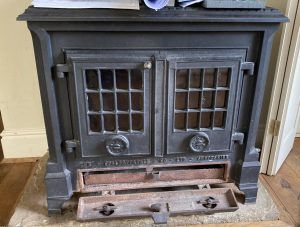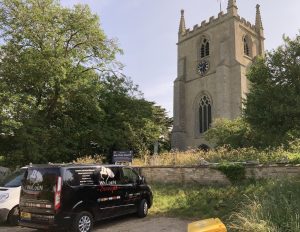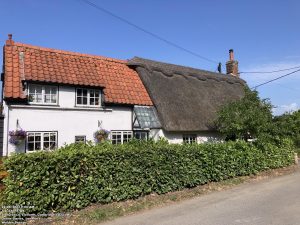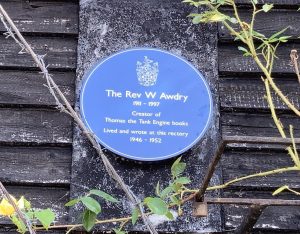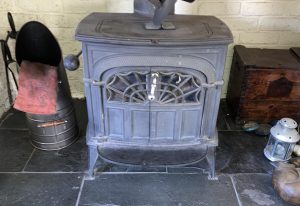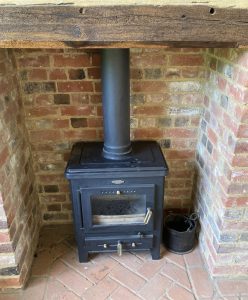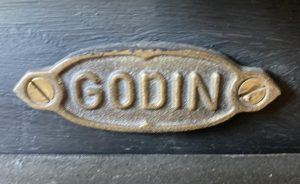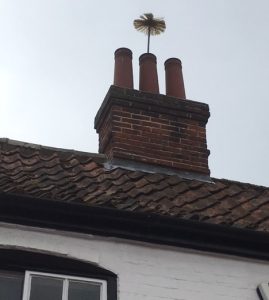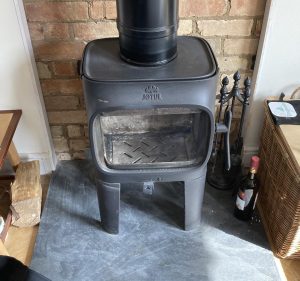 Here is the rather space age looking Jotul F105R Multi-Fuel Stove, I recently sept this example at an address in Milton. This address was literally a few doors away from another address I sweep at in Milton, so next year I have arranged to do them both on the same day, as Milton is a bit of a stretch for me from Saffron Walden. I usually do the other Milton address first thing in the morning, so travelling there in my own time as it where, and then working my way back to Saffron Walden via Cambridge and the villages south of there.
Here is the rather space age looking Jotul F105R Multi-Fuel Stove, I recently sept this example at an address in Milton. This address was literally a few doors away from another address I sweep at in Milton, so next year I have arranged to do them both on the same day, as Milton is a bit of a stretch for me from Saffron Walden. I usually do the other Milton address first thing in the morning, so travelling there in my own time as it where, and then working my way back to Saffron Walden via Cambridge and the villages south of there.
The Jotul F105 is certainly an unusual looking stove, like something from a Sci-Fi novel? A bit like a strange alien spaceship in my mind, but certainly ultra-contemporary., This example is in an old cottage, but the juxtaposition of old and very contemporary works very well and does not look out of place. The Jotul F105 is however a very tricky stove to work on and has a difficult top baffle to remove, which has minimal clearances within the stove – There is a real knack to it, and it has to be done in a very particular way or it just won’t be removed from the stove. Although it is not a very common stove I do work on a number of examples, most of which have been installed by Cut Maple Stoves from New England, so I’m used to dismantling them.
Jotul are a Norweigan company and have been making stoves and fireplaces for over 160 years. Jotul are proud of their global status, selling their products in 43 different countries spread over six continents – Truly a global brand!
Jøtul was founded by Oluf Onsum as Kværner Jernstøberi (Kværner Foundry) in the outskirts of Christiania (now Oslo) in 1853. While stoves initially were the main products, the company had diversified by the beginning of the 20th century, when it produced turbines and lumber equipment.
As the heating appliance manufacture decreased in importance, the production was spun off in 1916 and sold to Herman Anker, one of Kværner’s managers. He founded Jøtul AS in 1920 as a sales organization for its products. The sales stagnated during the depression in the 1920s, and 36-year-old Herman Anker died in 1927, leaving it to his successor, 34-year-old Johannes Gahr to modernize and eventually salvage the company. By 1935, the turnaround had succeeded, and the firm acquired its modern name.
By the 1960s, stoves using liquid fuels, especially kerosene had supplanted wood-burning appliances, a trend that was only reversed in the 1970s, partly due to the 1973 oil crisis. Jøtul used this opportunity to gain a strong international foothold and drastically increased its exports to continental Europe and North America.
The Gahr family sold the business to Norcem in 1977, and a period of international expansion began, as Jøtul acquired a number of foundries and importers abroad. This period lasted for approximately ten years, but came to an end during the recession in the late 1980s, when Jøtul once again focussed on the domestic market. However, it has resumed its international diversification in the 21st century, and today its products are sold worldwide.
In March 2018, Jøtul was acquired by the global private equity firm OpenGate Capital. Along with management, OpenGate has crafted a plan to boost performance and eliminate inefficiencies in Jøtul’s operations. In addition, OpenGate Capital is actively searching for add-on targets to further drive Jøtul’s growth. In November 2018, OpenGate and Jøtul completed the add-on acquisition of AICO, an Italian and French based pellet-burning stove leader.
https://www.jotul.co.uk/
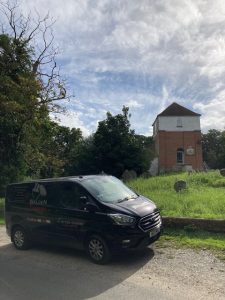
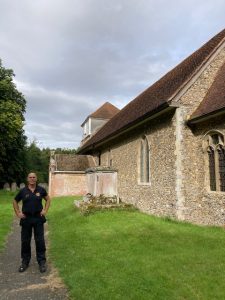
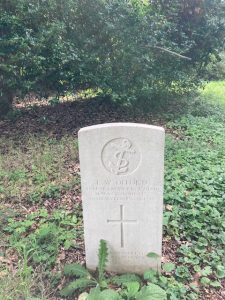
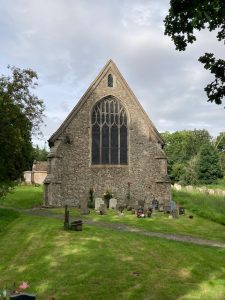


 My name is Paddy McKeown, I am a retired police officer (Detective Sergeant – Metropolitan Police), turned chimney sweep. I have completed training with ‘The Guild of Master Chimney Sweeps’, and Rod Tech UK (Power Sweeping).
My name is Paddy McKeown, I am a retired police officer (Detective Sergeant – Metropolitan Police), turned chimney sweep. I have completed training with ‘The Guild of Master Chimney Sweeps’, and Rod Tech UK (Power Sweeping).
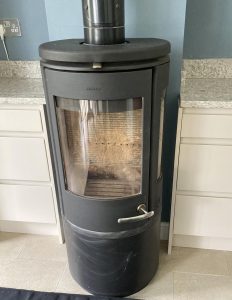
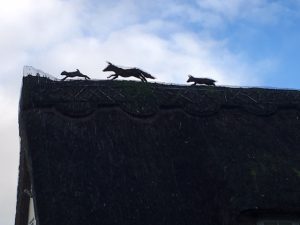
 Here is the rather space age looking Jotul F105R Multi-Fuel Stove, I recently sept this example at an address in Milton. This address was literally a few doors away from another address I sweep at in Milton, so next year I have arranged to do them both on the same day, as Milton is a bit of a stretch for me from Saffron Walden. I usually do the other Milton address first thing in the morning, so travelling there in my own time as it where, and then working my way back to Saffron Walden via Cambridge and the villages south of there.
Here is the rather space age looking Jotul F105R Multi-Fuel Stove, I recently sept this example at an address in Milton. This address was literally a few doors away from another address I sweep at in Milton, so next year I have arranged to do them both on the same day, as Milton is a bit of a stretch for me from Saffron Walden. I usually do the other Milton address first thing in the morning, so travelling there in my own time as it where, and then working my way back to Saffron Walden via Cambridge and the villages south of there.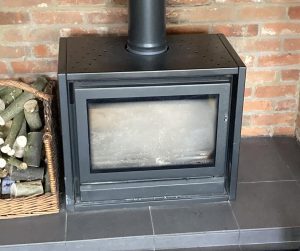
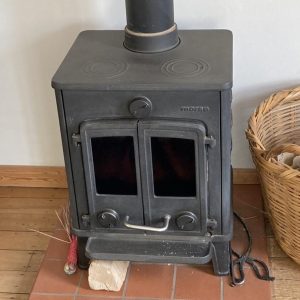
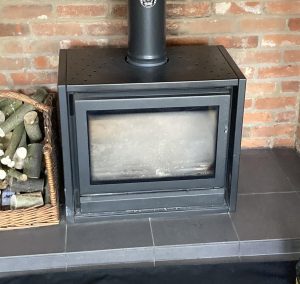 Here is something unusual for this week’s blog, a freestanding Stovax Riva, you don’t often see one of these! Although I do see lots and lots of the cassette version of the Stovax Riva I don’t think that I have ever seen a freestanding version, anywhere I sweep or in a showroom. This example is the Stovax Riva 66, which I recently swept at an address in Birchanger. It is a rather attractive contemporary stove, with very clean, straight lines and does not look out of place with the very contemporary home within which it is situated. So, I do like this stove and imagine that it is rather attractive when alight, however I can’t help thinking that when it is not working, it looks rather like a big fish tank? The customer reports that it is a very efficient stove and they do obtain very good fuel economy from it. Additionally, they told me that it does keep the room nice and toasty warm even on the coldest of winter days!
Here is something unusual for this week’s blog, a freestanding Stovax Riva, you don’t often see one of these! Although I do see lots and lots of the cassette version of the Stovax Riva I don’t think that I have ever seen a freestanding version, anywhere I sweep or in a showroom. This example is the Stovax Riva 66, which I recently swept at an address in Birchanger. It is a rather attractive contemporary stove, with very clean, straight lines and does not look out of place with the very contemporary home within which it is situated. So, I do like this stove and imagine that it is rather attractive when alight, however I can’t help thinking that when it is not working, it looks rather like a big fish tank? The customer reports that it is a very efficient stove and they do obtain very good fuel economy from it. Additionally, they told me that it does keep the room nice and toasty warm even on the coldest of winter days!